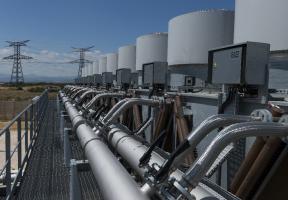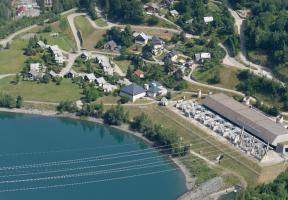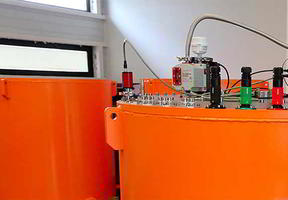Understanding Electricity
15 min read

© EDF / ERANIAN PHILIPPE - Extra-high voltage (EHV) transmission lines running from the Penly nuclear power plant on the French side of the English Channel.
is a ubiquitous part of our daily lives. Created by the movement of electrons, this source must be generated from a primary source such as , natural gas, , the sun, wind or water.
One of the major advantages of electricity is its ease and efficiency in transporting energy. However, there is a drawback: the electricity generated generally has to be consumed immediately, as storage options are limited.
Electricity is mainly generated in large quantities by nuclear plants and some thermal and hydroelectric power stations. These large quantities are intended to supply cities and industries. Electricity needs vary according to the time of day, activities, weather conditions and seasons. At any given moment, the electricity generated is the result of a subtle combination of different means of production, which are grouped together in what is known as the “electricity mix”. This mix is then distributed via networks to meet users' needs.
Explore

Electricity Generation and Related CO2 Emissions
Electricity is essential for industry, buildings and all aspects of daily life. But it has to be generated from a primary energy source, such as coal, natural gas, uranium, the sun, wind or water. The methods used to produce electricity also make it the main source of global CO2 emissions. For this reason, the choice of generation technology will play a decisive role in reducing electricity's environmental footprint, especially considering that coal, at one end of the spectrum, has a carbon impact 20 times greater than renewables, at the other.

What Is the Power Generation Mix?
The power generation mix (also known as the electricity mix) refers to the combination of the various fuels used to generate electricity in a given geographic region. It is still dominated by coal at the global level. However, this situation is expected to change significantly over the next 20 years with the sharp rise in the use of renewable energies and natural gas.

Saving Energy at the Individual Level
While large-scale energy savings can only be achieved through government initiatives and specific regulations, individuals can still play a role in reducing their own consumption. Home automation technology and Energy Performance Certificates (EPCs) are two accessible and effective solutions to guide consumers toward greater energy efficiency.

















